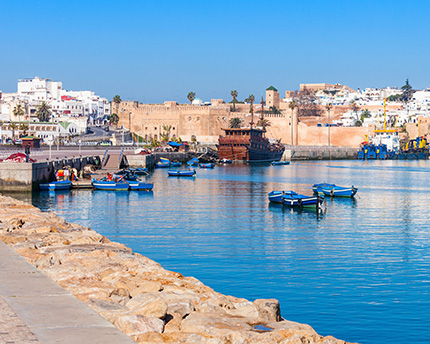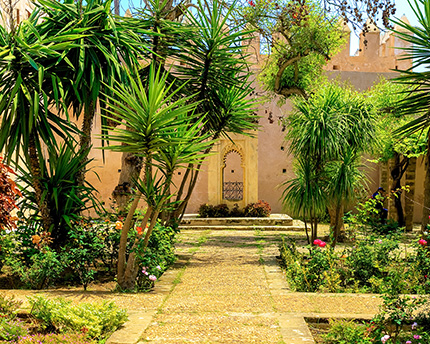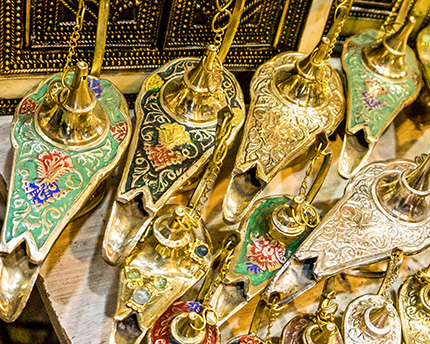Visiting the Moroccan capital is an experience full of surprises. Rabat offers a little bit of everything: from modern hotels and shopping centres to lush gardens and beautiful beaches; and from lively jazz and world music festivals to countless historical gems from different eras. In short, there is something for everyone.
Speaking of treasures from times gone by, one of the essential historical gems in Rabat is the Oudayas Kasbah. This ancient kasbah (fortified citadel) from the Almohad period (12th century) is a true architectural marvel, which was recognised as a UNESCO World Heritage Site in 2012. But that’s not all. This small walled village with a Mediterranean feel, nestled within the city, is also a magical place where legends of ancient North African empires, tough Saharan tribes and Moors expelled from al-Andalus still resonate.
More than a thousand years of history
After the Romanisation of the mouth of the Bou Regreg river and the subsequent abandonment of the city of Sala or Sala Colonia (now the necropolis of Chellah), various Berber and Almoravid rulers took control of the area, establishing a fort or ribat on the cliffs that mark the point where the river meets the waters of the Atlantic. However, it was not until the end of the 12th century, under Almohad rule, that the Oudayas Kasbah began to take the form we know today.
The main testimony to that early period is clearly the monumental gate of Bab El Kebir, also known as Bab Oudayas, with its large pointed horseshoe arch and the intricate geometric motifs that characterise its decoration. Later, especially after the expulsion of the Moors from Spain in 1609, the Kasbah would emerge from a period of neglect to acquire the markedly Andalusian and Mediterranean style that is still clearly visible in its interior today. For almost half a century (1626-1668), Rabat, together with neighbouring Salé, formed an independent republic of Moorish corsairs whose main centre of power was the Kasbah itself.
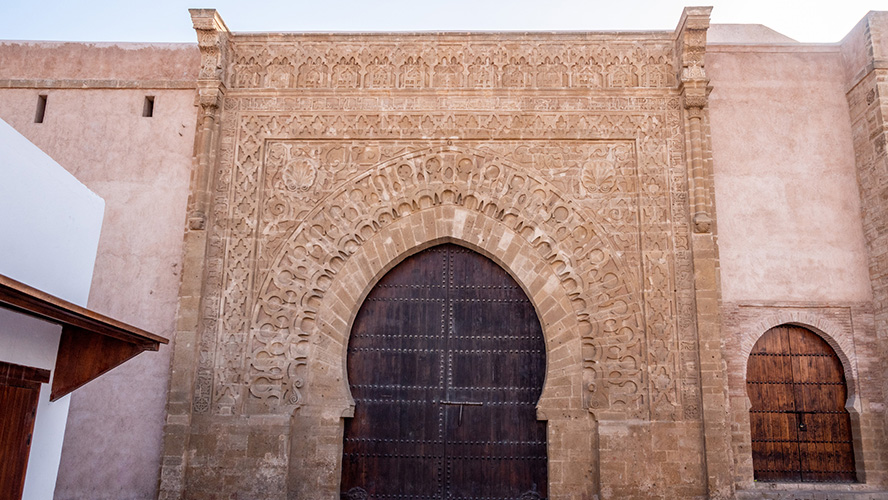
In the second half of the 18th century, it was the turn of the Alawite dynasty to make the most extensive modifications to the citadel in its long history, including the construction of the Alawite Royal Residence, the Jamaa el Atiq Mosque, the Sqala Tower and many other significant elements in this unique corner of Rabat. Moreover, in the early 19th century, a conflict between the current ruling house of Morocco and the Oudaya tribe (Arabs from the Sahara) ended with the latter as residents of the old citadel, which is why it bears the name by which it is known today.
Rabat’s blue quarter
Narrow alleyways and labyrinth-like alleys, lined with countless houses painted blue and white (an Andalusian heritage), make the Oudayas Kasbah a truly magical place, colloquially known as the blue quarter of Rabat.
In this sense, its peculiar Mediterranean air invites you to lose yourself in the kasbah while exploring the charming corners and small nuances that still tell the story of the place. You will see pots with all kinds of plants and flowers, fountains that refresh the atmosphere, richly decorated doors, the latticework that guards the windows from the gaze of others, an arch and a wall that seem to have always been there, balconies overlooking the sea, a picturesque square, etc.
Rabat’s blue quarter obviously has its musts, such as the Bab El Kebir gate, the Alawite palace, the mosques and the Sqala Tower, but also special places like Café Maure, a mandatory spot for drinking mint tea and soaking up the atmosphere. It also has places like the National Museum of Jewellery and Adornment, housed in the former palace of Moulay Ismail (17th century), which displays an exceptional collection of ceramics, brassware, jewellery, traditional dresses, etc., as well as archaeological and historical objects that tell the story of the Kasbah itself and of the Oudaya tribe.
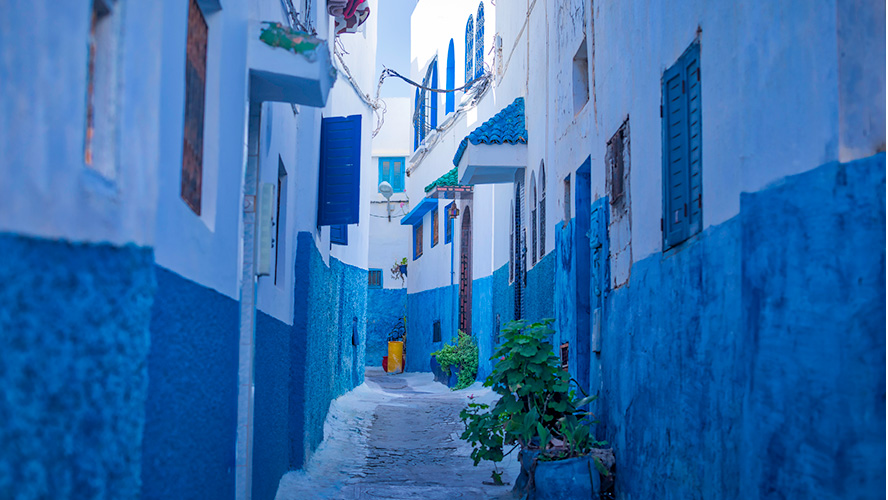
Also inside the Oudayas Kasbah is a true oasis within the city: the Andalusian Gardens. Despite being an addition made during the years of the French Protectorate (early 20th century), this lush corner is one of the city’s most popular green areas. It is a haven of peace which, although not in the same league, is reminiscent of the Alhambra gardens in Granada or the Alcazar in Seville.




































































